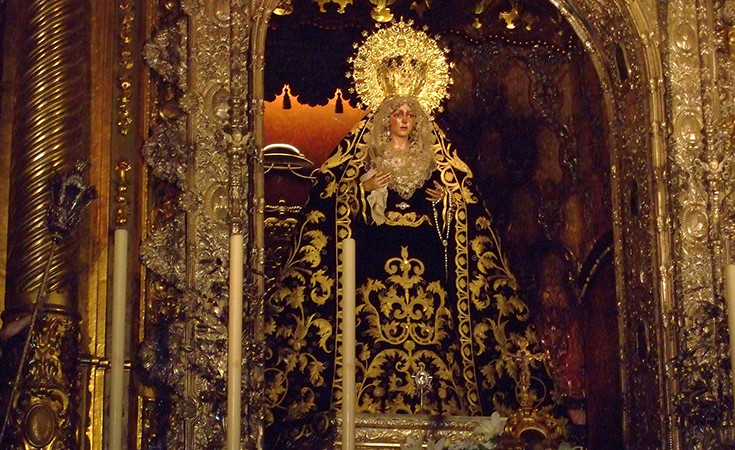
The Basilica of Saint Macarena in Seville is also called the Basilica of Maria Santissima. This is a Catholic church and is officially part of the old town of Seville. The construction of this Temple began in 1941, and the then Archbishop of Seville, Pedro Segura, blessed the land on which the construction of the temple was to begin. He laid the foundation stone and this magnificent temple was completed eight years later, in 1949. Originally, the Temple was intended to house paintings that belonged to the Macarena brotherhood, but those paintings disappeared by being burned in 1936. The construction of the Temple was certainly not abandoned, five years later.
The main architect of this place of worship was Aurelio Gomez, and the then Pope Paul VI blessed and visited the Temple in 1966, which the people of Seville are particularly proud of. The style in which the basilica was built is neo-baroque and on the main altar there is an icon of the Virgin Mary of Macarena. (Virgen de la Esperanza Macarena). The author of the icon (picture) is anonymous, but it is known that it was made at the turn of the 17th to the 18th century. The altar was built to order in 1949, and Antonio Sanchez was in charge of the gold details. There are various decorations of the Virgin Mary, several chapels, stairs, canopy, and the artist Juan Pérez Calvo was in charge of all that interior.
The chapel and dressing room of the Judgment are particularly interesting. In one of the chapels there is a painting by Filipe de Morales, painted in 1654. There is an altar there, which is the work of the artist Peres Calvo, and it was a gift to this church from the Ministry of Justice. The altar was built in the recent era, in 1951. This entire Basilica is a great baroque inspiration.
On the right side, near the main altar, there is the Chapel of the Rosary, in which there is an image of the Mother of God with Jesus. This special image can be seen on the streets of the city in a procession held in the last week of October. Another very important altar of the basilica is the altar of the Hispanics, on which you can see a picture that is a gift and gratitude to the people of South America, who donated a large sum of money for the construction of this basilica. Of course, there is a very important painting in the basilica, i.e. icon, it is the Virgin of Guadalupe, the patron saint of Mexico, made in the 18th century. There you can see the icons of the patroness, like this: the patroness of Venezuela, the patroness of Paraguay, the patroness of Peru, Lima, Argentina, the patroness of Chile, the Dominican Republic and Costa Rica.
In the Basilica there is a small museum with gold and silver votive donations, various paintings, which are real works of art. From the outside, the basilica is quite simple for a Baroque building, in yellow and white.
Entrance to the basilica museum is charged €5 per person
Author of the text:

Maja Glavaš, Bachelor with Honours in Communicology. Works in Tourism.
Contact: [email protected]; instagram: travel_europe1